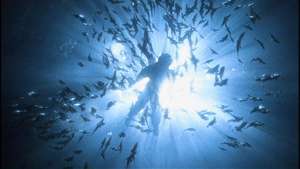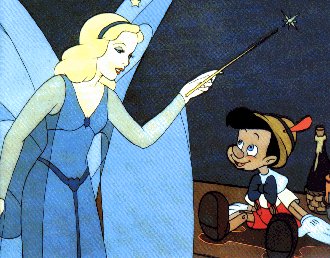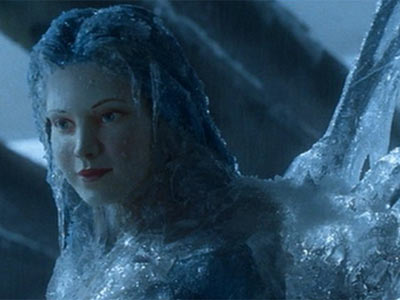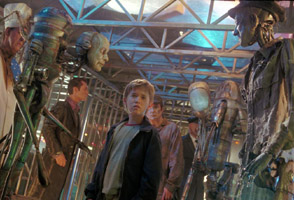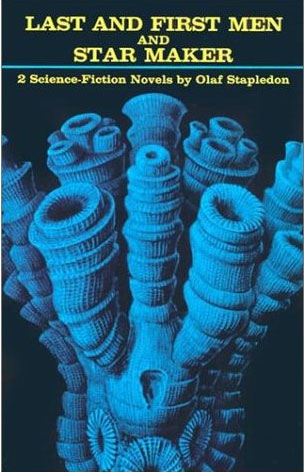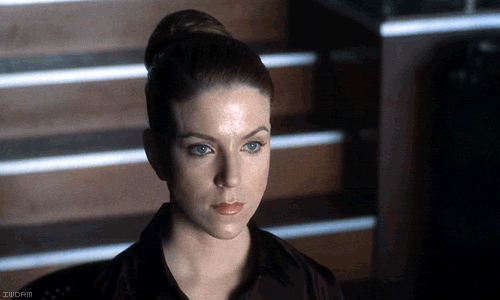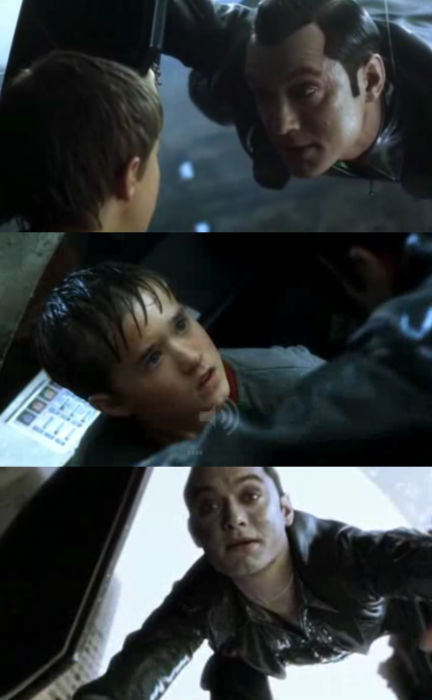Written for the 40th anniversary issue of the French quarterly magazine Trafic (Winter 2011). I subsequently introduced a screening of this film at the Centre Georges Pompidou on January 12, 2012 as part of a film series built around this issue, and my introduction (in French and English) can be accessed on video here. For my original review of this film, go here. — J.R.
1
Am I weeping for the death of David’s mother, for the death of humans, for the death of photography, or for the death of movies?
James Naremore, On Kubrick
The scene in question, the final one in A.I. Artificial Intelligence, features a robot boy, David (Haley Joel Osment), and a cloned duplication of a human woman, Monica (Frances O’Connor), who died centuries before and whom David was still earlier programmed by Monica to love as a mother. These characters are shown going to bed together and falling asleep, the robot for the first time and Monica for the last time, after spending a happy day together. This is an experience of orgasmic closure and extinction afforded to David by sympathetic extraterrestials visiting Earth who have found him frozen in ice long after mankind has perished, and have searched his memory for cinematic images of his life that they share among themselves and then reproduce in actuality. The day itself that they create for David is a fiction made up of these shared images — an Oedipal birthday party for David, who never had a birthday because he was never born, enjoyed without the presence of a father or brother, where David draws “storyboards” of his adventures 2000 years earlier to show to a receptive if uncomprehending Monica.
David — the first in a line of robots designed to love humans — was purchased by Monica’s husband Henry after their real-life son Martin entered a long-term coma from which he might never recover. In other words, David was invented in order to fill a gap, and we also discover that David’s unscrupulous inventor, Allen Hobby (William Hobby), made him a precise replica of his own lost son. So he can never be anything more than an approximate substitute, just as the clone of Monica, created from a lock of the real Monica’s hair preserved for 2000 years by David’s teddy bear (a fellow super-toy named Teddy), can also never be anything else.
In David’s case, however, the differences between a real and ersatz Monica are crucial because only the latter can love him. Two millennia earlier, some time after she programmed David to love her, the original Monica discarded and abandoned him. He became unacceptable once her own son recovered from his coma and returned home, even though initially David was treated like a second child. But after a series of taunts and challenges by Martin towards his sibling rival, the boy robot started to malfunction — attempted to eat spinach at one family meal, which necessitated mechanical surgery, and at a birthday party for Martin, after some of Martin’s friends threatened to cut David with a knife, David seized Martin, asking for his protection, and fell with him to the bottom of a swimming pool.
David has always been a simulacra, and in the film’s final scene the resurrected Monica is one as well; both are as reproducible as the separate prints of a film. Viewers who criticize their final scene together — also an improved simulacrum, in this case of much earlier scenes between them — as sentimental usually overlook that it is occurring long after humanity has died out. This means that the death Naremore refers to has to be the death of an emotion or idea — even if, as the film’s offscreen narration implies, it is also the birth of a dream, a robot’s dream. Perhaps it could be regarded as an artificial and manufactured footnote to the human race, a sort of ghostly echo. Something, in short, that is very much like a film.
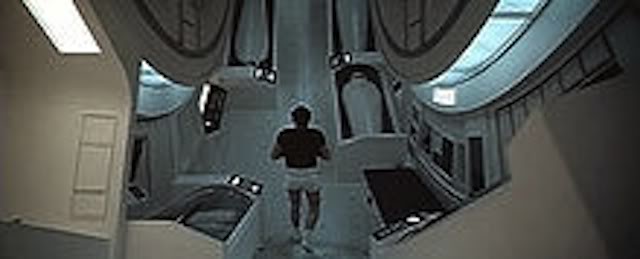
Like Naremore, I weep during the final scene of A.I. and I don’t know who or what I’m weeping for — even though, like him, I can recall the line cited in the film by Yeats (a poet who also once wrote, “In dreams begin responsibilities”): “The world’s more full of weeping/than you can understand.” Like him, I suspect that my tears must have something to do with both the loss of my own mother and my experience of cinema — what it means to be born and then to be abandoned, and also what it means to bask in the familial warmth and shelter of a film and a film theater before being ejected from both. Prior to this scene, what has dominated this tragic film has involved a feeling of chill and abandonment, from the ocean waves in the first shot through various images of boys in frozen coffins that recall the “sleeping” astronauts in suspended animation in Kubrick’s 2001: A Space Odyssey (1968) to an image of David, bereft and alone, at the bottom of the swimming pool. (Similarly, David’s frozen underwater prison in the ruins of Coney Island is created by a detached ferris wheel, an image drawn from Spielberg’s 1979 film 1941.)
In the pessimistic cosmology shared by Kubrick and Spielberg, cinema and death appear to be the only enduring realities, each one dominated by fixation on a maternal figure. The Blue Fairy, a deity from Pinocchio, is described by Hobby as “part of the great human flaw — to wish for things that don’t exist”; David seeks her out to make him a “real” boy and thus gain Monica’s love. And the Monica who loves David and appears only in the film’s final scene is a deity derived from life, but no less a fiction. For Hobby, a version of both Mephistopheles and Frankenstein, human flaws, including his own, can be “great” and therefore cherished, but for David, condemned to love someone who won’t love him back, they can only be lamented. Both characters, in effect, are incurable cinephiles. And the film brings us closer to David than to Hobby, so that we ultimately love a film that refuses to love us back.
A.I. is a film about having been programmed emotionally — something that the cinema does to us all, and a subject that my first book, Mouvements [Moving Places: A Life at the Movies], attempted to explore. (1) This is one reason why, as a profound meditation on the difference between the human and the mechanical, A.I. Artificial Intelligence constitutes one of the best allegories about cinema that I know. And to recount this allegory in terms of a mother’s love makes it even more devastating.
2
Perhaps the most overrated virtue in science fiction is an aptitude for prophecy. This virtue has almost nothing to do with why Olaf Stapledon’s Star Maker (1937), which recounts the life and breadth of the cosmos, is for me the greatest of all science fiction novels. “Stapledon doesn’t shore up inventions to distract or stupefy the reader,” Jorge Luis Borges wrote of Stapledon in his 1965 Preface to the novel (2), never published in English; “with an honest rigor, he pursues and retraces the complex and obscure vicissitudes of his coherent dream.” And the true basis of this coherent dream was Stapledon’s precise grasp of 1937 England, not so much his very beautiful and persuasive vision of the birth, death, and breadth of the cosmos that derived from this concrete experience.
Stanley Kubrick died in the same country 62 years later, only two years prior to 2001 (ironically, the same year that A.I. Artificial Intelligence was released), and among the many plausible reasons for considering 2001: A Space Odyssey a masterpiece, prophecy about the persistence of the Cold War into the second millennium, with the planet neatly divided between the U.S. and Russia, clearly isn’t one of them. By contrast, the initial vision of the future in A.I. Artificial Intelligence seems frighteningly plausible from the vantage point of 1999 or 2001 or 2011 (when this essay is being written). Just as 2001 extends portions of the Cold War premises of Doctor Strangelove, A.I. develops the premise of artificial intelligence as represented by HAL in 2001. Yet what seems most prophetically plausible is the prediction of what happens to Earth and humanity prior to this development — the destruction of the Earth as we know it that makes the displacement of humans by robots inevitable. “They made us too smart, too quick, and too many,” Gigolo Joe (Jude Law) says to David. “We’re suffering for the mistakes they made because when the end comes, all that will be left is us. That’s why they hate us.” And, by the same token, this is why we prefer the robots in this story to the humans.
Over the image and sound of crashing ocean waves, an offscreen male narrator says, “Those were the years after the ice caps had melted because of the greenhouse gases, and the oceans had risen to drown so many cities along all the shorelines of the world. Amsterdam, Venice, New York, forever lost. Millions of people were displaced, climate became chaotic. Hundreds of millions of people starved in poorer countries. Elsewhere a high degree of prosperity survived when most governments in the developed world introduced legal sanctions to strictly license pregnancies. Which is why robots, who were never hungry and did not consume resources beyond that of their first manufacture, were so essential an economic link in the chain mail of society.”
This prelude morphs into a lecture by Professor Allan Hobby (William Hurt) at Cybertronics, a company in a New Jersey facility, about robots, during which he stabs a woman robot in the hand and casually asks her to start undressing as portions of his demonstration. He proposes building a robot who can love humans, creating “a love that will never end,” and the moral issue raised by a woman in the audience, which Hobby refuses to address, remains at the film’s center. I’ve argued elsewhere that Kubrick was more of a moralist than Arthur Schnitzler and that Eyes Wide Shut, unlike Traumnovelle, has a villain (Sydney Pollack’s Victor Ziegler), so it’s important to emphasize that the villains of A.I. (Hobby first of all; secondarily Martin, the natural child of Monica and Henry; and more incidentally, the working-class mob of the Flesh Fair) are exclusively human, and that the recurring detournement performed by the narrative is to shift our identification from humans to androids. Repeatedly the film turns from making us uncomfortable about the otherness of robots to make us even more uncomfortable about the thoughtlessness and cruelty of humans — and by ending the first sequence with Hobby’s female robot applying makeup just before beginning the second sequence with the human Monica applying makeup, the film is already asking us to make comparisons. Ostensibly the film is about the programming of a robot by his adoptive human mother to love her, but the self-programming of Monica — first to accept David as a human and then to reject him — is no less crucial.
Yet one thing that limits A.I. both as prophecy and as vision throughout is a venerable Hollywood staple, the reduction of the world to America. After the fleeting reference to Amsterdam and Venice in the opening narration (a concession that already limits humanity to the West, thereby consigning most of Earth’s population to oblivion), the rest of the world ceases to exist for the remainder of the narrative, which restricts all its action over two millennia to New York and environs. Ironically, even Disney’s Pinocchio (1940) was worldlier in its placement of its own American hero and American Blue Fairy within a European setting populated by various Italian and English characters. Yet curiously and inexplicably, the only English as opposed to American accent that we hear in A.I. is that of the offscreen narrator. So the conception of a 21st century in A.I. that is generically and exclusively American already dates the film as a 20th century conception. (Ironically, Stapledon’s own first book, in 1930, Last and First Men, purporting to recount the remaining two billion years of human history, founders at least partially as prophecy on a similarly shortsighted premise of an “Americanized” planet.)
3
Unlike many of my colleagues, I can’t simply accept A.I. as either “a film by Steven Spielberg” or “a film by Stanley Kubrick”. I can only read it as a film deriving from the will and consciousness of both of them — one alive and one dead, and encompassing all the dialectical contradictions that this strange collaboration entails. In a way these contradictions become those of cinema itself, what Gilberto Perez has called the material ghost, which confound us about what is living or dead, animate or inanimate, human or robotic — or, in the terms of A.I., “orga” or “mecha”.
When he was alive, Kubrick proposed that Spielberg — a friend who first read a treatment for A.I. in 1984 — direct the film,. He gave two reasons: because Spielberg could direct a boy actor more quickly than he could, before the boy had time to visibly age, and because he believed Spielberg would be more adept in handling the story’s emotions. Perhaps he was also correctly thinking of Spielberg as the only true successor of Walt Disney, whose major emotional theme is the traumatic loss or absence of parents — especially in Pinocchio, Dumbo, Bambi, and Song of the South. But it’s worth adding that Kubrick arrived at the notion of Spielberg directing A.I. only after he explored and then rejected the possibility of a robot playing the robot hero. To my mind, Haley Joel Osment’s performance as David is one of the greatest child performances in the history of cinema, but for Kubrick, it seems that any human performance in the role would necessarily qualify as a compromise and concession. So it isn’t surprising that the film makes us care chiefly about the robot characters, not about the human ones.
After he died, Kubrick’s widow and brother-in-law again proposed that Spielberg make the film, because otherwise it would never exist, and Spielberg, after agreeing, wrote his own script derived from the materials generated or supervised by Kubrick — a 40-page treatment by Ian Watson, inspired both by a 1969 Brian Aldiss story (“Super-Toys Last All Summer Long”) and by Carlo Collodi’s 1883 novel Pinocchio, and over a thousand detailed drawings by Chris Baker.
I suspect that Spielberg brought far more faithfulness and seriousness to this project, at least within his own limitations, than he brought to Thomas Keneally’s novel of Schindler’s List or, for that matter, to the subject of the Holocaust. But this is only a suspicion on my part, based mainly on Spielberg’s various statements. (He has published many of Baker’s drawings, both as DVD extras and in a large-format book about A.I. edited by Kubrick’s brother-in-law Jan Harlan and Jane M. Struthers [New York: Thames & Hudson, 2009]; but virtually none of Watson’s treatment apart from a few stray pages reproduced in the latter has become available. 2019 postscript: a treatment credited to Watson and Aldiss is now available at https://indiegroundfilms.files.wordpress.com/2014/01/a-i.pdf.)
I must confess that, even though Spielberg may have made the film’s beginning and ending more emotionally powerful than Kubrick could have, his less focused handling of the film’s middle section as a succession of fairground attractions (Flesh Fair, Rouge City, a drowned Manhattan and Coney Island) where the sense of spectacle periodically threatens to overwhelm the narrative is somewhat less convincing. Arguably, the only sequence in this section that recovers the purity of the film’s beginning and end is David’s visit to the factory where he discover with horror not only his doppelgänger but an endless, assembly-line procession of Davids. Yet even here, the film falters by misplacing Hobby — the principal villain whom neither the film nor David himself ever quite succeeds in morally confronting. By this time, the narrative has become so disgruntled with humanity that it can only turn away from Hobby and his coworkers to concentrate on David and Gigolo Joe and their separate forms of existential doom. (Only Teddy, the film’s Jiminy Cricket, seems exempt from the wretchedness of their immortality). Even Joe, who lacks David’s capacity for love, becomes morally superior to Hobby, whose morbid love for his dead son led to the blighted creation of David.
Even though Joe, unlike Monica and Hobby, can’t experience death, there is no extinction in the film that feels more tragic than his as he’s being reeled away like a captured fish, when he says to David, “I am — I was,” a four-word summary of his existential dilemma. Cinema lives; but is this a blessing or a malediction?
End Notes
1. Mouvements: une vie au cinéma, Paris: P.O.L, 2003.[Moving Places: A Life at the Movies, New York: Harper & Row, 1980; revised edition, Berkeley: University of California Press, 1995.]
2. Livre de Préfaces, traduit de l’espagnol par Françoise-Marie Rosset, Paris: Gallimard, 1980, 196. (Original Argentinian edition of the novel: Hacedor de estrellas, Buenos Aires: Ediciones Minotauro, 1965.)


